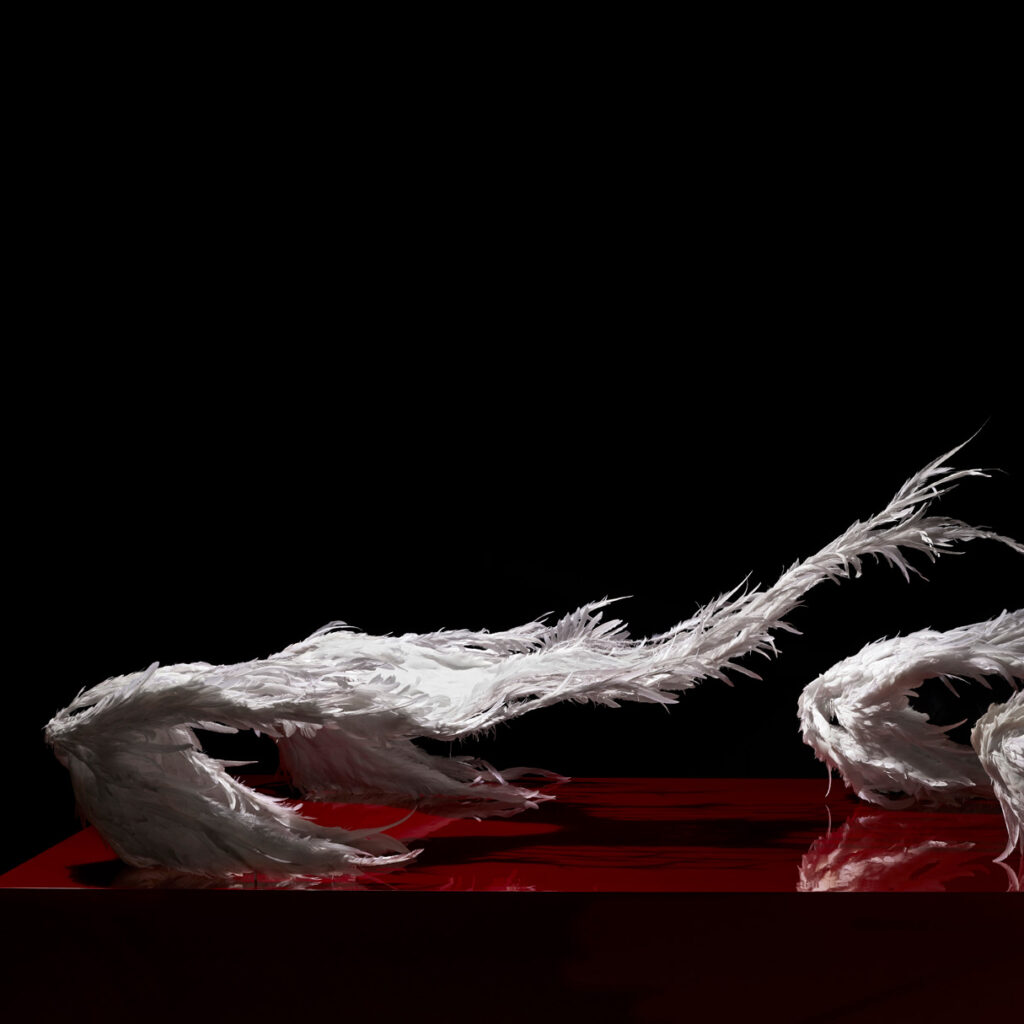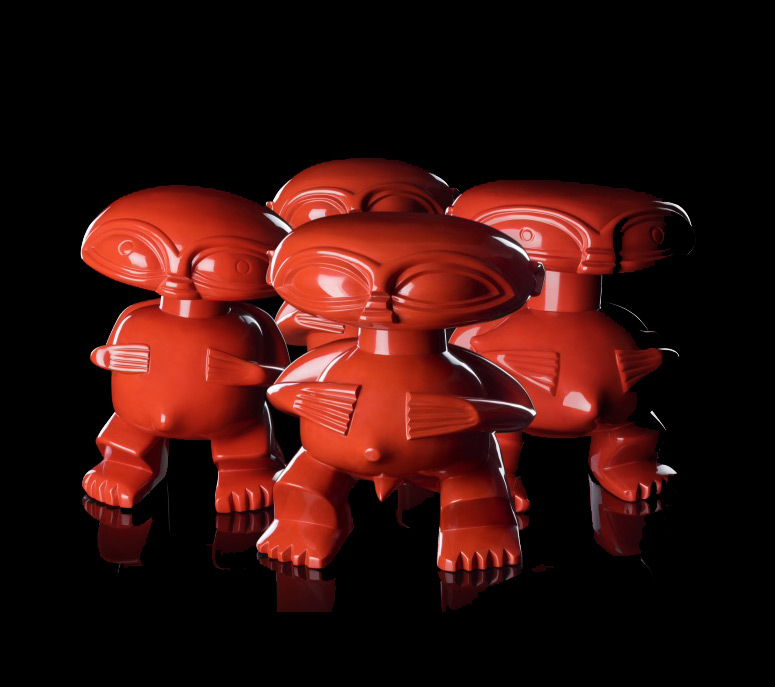
The Swedish National Museums of World Culture acquire kimono by Serge Mouangue!
West Africa meets Japan in cross-border design.
One of the Parisian-based designer Serge Mouangue’s innovative kimonos has been purchased for the Museums of World Culture’s collection. The work Night Wonders combines Japanese kimono traditions with West African aesthetics – representing an example of how something completely new arises when different cultures are woven together.
When the Museum of World Culture in Gothenburg opened its doors after its temporary closure due to the corona pandemic, visitors were greeted by a fascinating kimono in the entrance that unites expressions from both Africa and Japan. The work is designed by Cameroon-born Serge Mouangue and composed by the ancient Japanese kimono manufacturer Odasho in Kyoto. The kimono combines West African cotton fabric with Kyoto silk in a furisode-type kimono.
For the Museums of World Culture, the WAfrica kimono is an object that represents a cultural encounter in a changing world. Globalization not only risks people losing parts of their cultural identity – it also provides an opportunity for meaningful conversation, as here, between two strong cultural traditions: the Japanese kimono craft and the Central African cultural heritage, says Ann Follin, director general at the Museums of World Culture.
Serge Mouangue got the idea for WAfrica during the five years he lived and worked in Japan, and founded the creative platform in 2008. By finding commonality and celebrating differences, WAfrica seeks to create a truly global ‘third aesthetic’. The name WAfrica comes from the association of Wa (“harmony” or “Japan” in Japanese) and Africa.
Cultures around the world are interconnected. They influence and inspire each other and are in constant motion and changing over time and space. I am happy that the Museums of World Culture have chosen to include one of my works in their collection, and I think that Night Wonders complements the collection well precisely because it is an example of how something new is created when cultures meet, says Serge Mouangue.
The kimono from the WAfrica-collection is on display in the Museum of World Culture’s entrance in 2021 and weaves two exhibitions together, both displayed at the Museum of World Culture during 2021: Black Thread and Kimono – Kyoto to Catwalk.
The purchase of the kimono has been made possible through funds from the Didrik Bildt’s fund. The purpose of the fund is to support the purchase of objects from Japan and the care of the museums’ Japanese collections.
For further information, please contact:
Johanna Flemström, Communications Specialist
+ 46 (0)10-456 1161, johanna.flemstrom@varldskulturmuseerna.se










